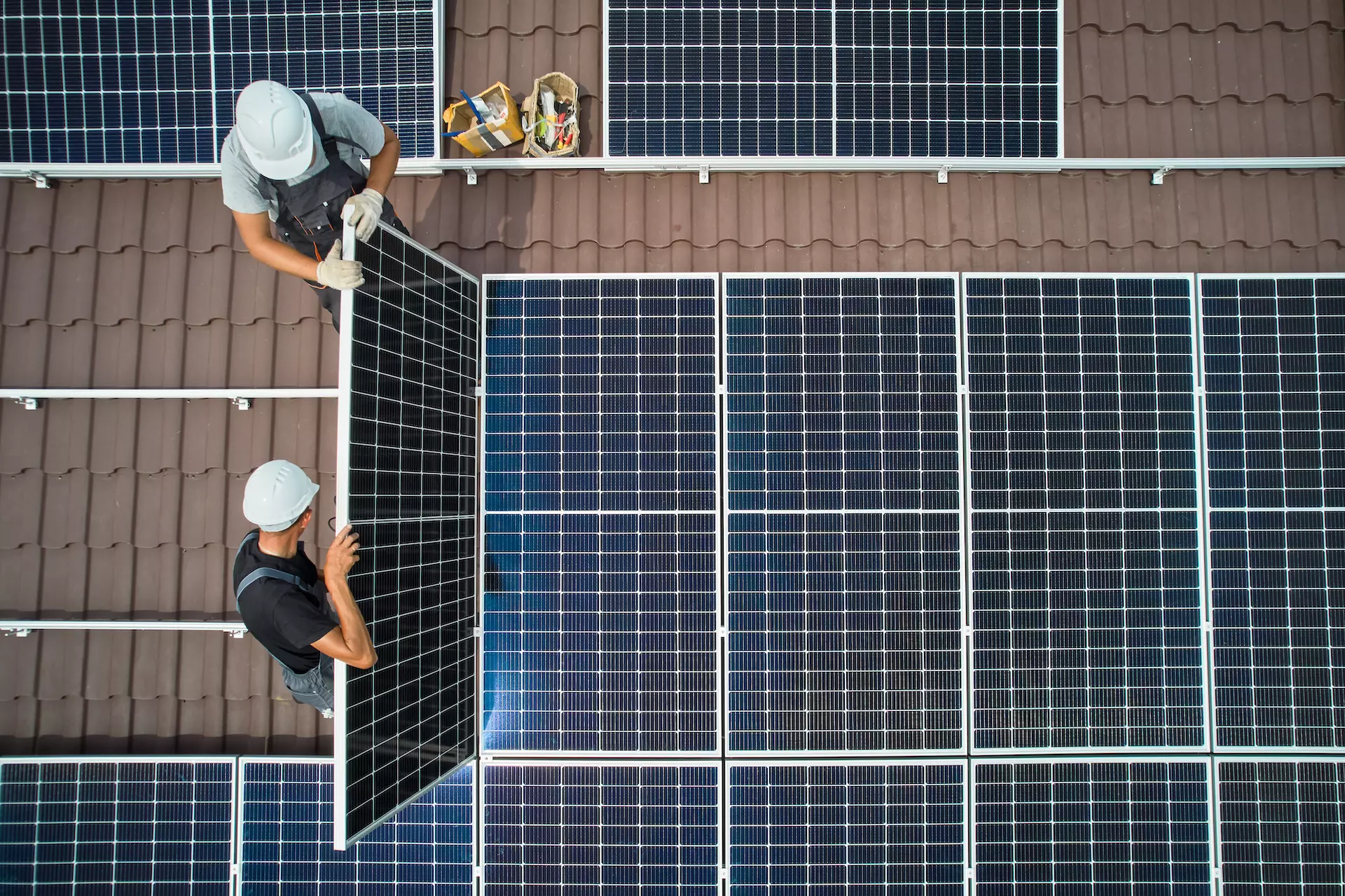https://www.lifegate.it/rendimento-pannelli-fotovoltaici
- |
The performance of photovoltaic panels it is a crucial indicator for evaluating theenergy efficiency of a solar system.This parameter measures the ability to convert sunlight into electricity, determining the productivity and effectiveness of the installation.A high yield means greater energy production in a given space, making the investment in solar technology more profitable.

Factors that influence the performance of photovoltaic panels
There are several factors that play a role in determining the performance of photovoltaic panels.Let's try to list them:
- Geographic location:the geolocation of the solar system is certainly one of the most important factors.Regions with greater exposure to sunlight, such as those in southern Italy, have the potential to generate more energy:according to estimates developed by the European Commission's study centre, a 1 kW photovoltaic system produces a different quantity of electricity per year, depending on the geographical area, a quantity ranging from 1,000 kWh in the northern regions to 1,500 kWh in the southern ones.A variation attributable to the different exposure to solar radiation, which tends to be more intense at lower latitudes, where the sun's rays hit the Earth's surface more directly.The EU Commission itself has generated a online tools on which to carry out a simulation and approximate how much energy will be produced by our system;
- Inclination and orientation:the angle and orientation of the panels directly influence the amount of solar energy captured.Precision in orientation is essential to maximize the absorption of sunlight.In Italy, for example, the optimal inclination of the modules is 30-35 degrees;
Effects of operating temperature:unlike what you might imagine, high temperatures can reduce the efficiency of the panels.Temperature management therefore becomes essential to maintain optimal energy production levels; - Quality of materials:the materials used to build the panels is certainly crucial.High-quality materials ensure more efficient energy conversion and contribute to the longevity of the system.
Sizing of the photovoltaic system:Correct sizing of the system is essential to ensure optimal performance.Criteria such as energy consumption and environmental conditions must be carefully considered.
How to calculate the performance of photovoltaic panels
Now, having established the list of factors, it is important to understand how to calculate the performance of photovoltaic panels.The general formula considers the electrical power produced, the surface area of the panels and the solar radiation received. The formula is as follows:
Efficiency % = (Power / Surface / 1000) x 100, where the power is expressed in watts and the solar radiation collection surface in square metres.
It is important, as mentioned before, that returns can vary greatly depending on the factors mentioned above, such as the quality of the panel materials, the inclination and orientation with respect to the sun, and environmental conditions, including operating temperatures.Usually expressed as a percentage, the efficiency of traditional photovoltaic panels, such as those made of polycrystalline or monocrystalline silicon, generally varies between 15 percent and 22 percent.However, more advanced technologies, such as thin-film photovoltaic panels or multi-junction solar cells, can achieve higher yields.These technologies tend to offer better performance, but usually come with higher costs.
Optimization of performance and durability
Now let's see what the tips and strategies are to optimize the performance of photovoltaic panels.Starting from their maintenance and cleaning:keeping panels clean and well maintained is essential to maximizing performance.
It is also possible to implement a vegetal cover on the roof, if possible, in order to avoid excessive heating of the photovoltaic panels which could compromise their efficiency or use photovoltaic optimizers in case of partial shading to improve the performance of the individual modules.
More generally, monitoring applications efficiency and orientation optimization can increase energy production.To increase the producibility of the systems by 20-30 percent, it is also possible to mount the panels on supports with variable orientation (mono or biaxial), capable of constantly following the movement of the sun (tracking systems).
But how long do the panels last? Photovoltaic panels can last several decades, 25-30 years, with proper maintenance.But their performance can change over time, due to aging, technological obsolescence and environmental conditions.

Questions and answers
- How much kWh does a photovoltaic panel produce? Production depends on panel specifications and environmental conditions.
- How many years does a photovoltaic panel last? Panels can last up to 25-30 years or more, with proper maintenance.
- How much does a photovoltaic system cost? The price changes based on the technology used and the type of panel used.The price for an average 6 kW photovoltaic system can range from 1,500 to 2,500 euros per kW, with a total cost of around 9,000-16,000 euros.
In conclusion, carefully considering the factors that influence performance and adopting optimization strategies can lead to a more productive and sustainable solar investment in the long term.
